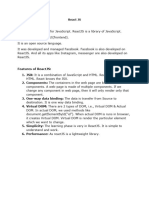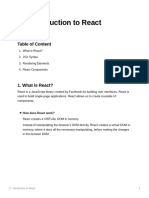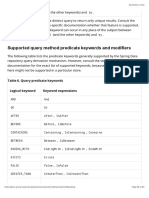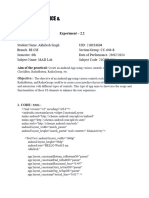0% found this document useful (0 votes)
8 views6 pagesComponents
The document explains the structure and functionality of React components, emphasizing that components are JavaScript functions that return markup and must start with a capital letter. It details the use of 'export default' for exporting a single component from a file and contrasts it with named exports. Additionally, it covers JSX syntax, styling, data display, and conditional rendering techniques in React applications.
Uploaded by
yogitachavan0117Copyright
© © All Rights Reserved
We take content rights seriously. If you suspect this is your content, claim it here.
Available Formats
Download as DOCX, PDF, TXT or read online on Scribd
0% found this document useful (0 votes)
8 views6 pagesComponents
The document explains the structure and functionality of React components, emphasizing that components are JavaScript functions that return markup and must start with a capital letter. It details the use of 'export default' for exporting a single component from a file and contrasts it with named exports. Additionally, it covers JSX syntax, styling, data display, and conditional rendering techniques in React applications.
Uploaded by
yogitachavan0117Copyright
© © All Rights Reserved
We take content rights seriously. If you suspect this is your content, claim it here.
Available Formats
Download as DOCX, PDF, TXT or read online on Scribd
/ 6
























































































